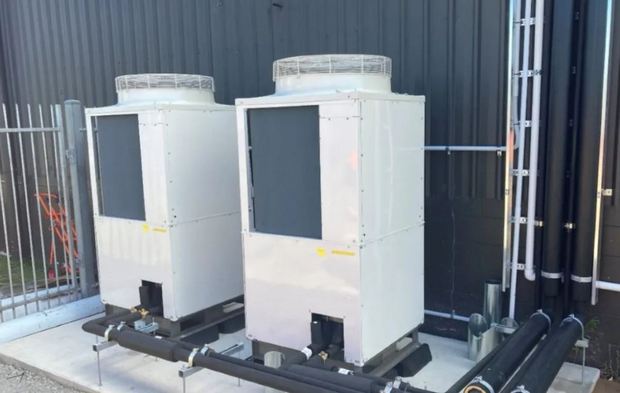Panasonic Sees Steady Growth in Transcritical CO2 Sales in Australia/New Zealand

Since bringing its transcritical CO2 (R744) condensing units to the Australian and New Zealand market in 2020, Japanese manufacturer Panasonic, in partnership with its New Zealand-based subsidiary McAlpine Hussmann, has seen a steady growth in sales each year.
By the end of 2022, the company expects to have sold around 100 units in the region.
These sales figures were shared by Gaku Shimada, Manager, CDU Strategic Marketing Team, Cold Chain Solutions Company at Panasonic during the State of the Industry – Australia and New Zealand online session on the second and final day of the ATMOsphere APAC Summit 2022 on June 28.
Driving this growth is the fact that the units “work properly without any issue,” said Shimada. Customers also see reduced energy consumption through improved efficiency – an added bonus, he noted.
Transcritical CO2 in Oceania
Panasonic’s small-capacity condensing units are currently available in 2HP, 4HP and 10HP, and can meet needs from 2kW (0.6TR) up to 16kW (4.5TR) for both medium and low temperature. As explained by Shimada, in the Oceania region, the majority of these units have been installed for refrigeration applications in small supermarkets in New Zealand.
There are also plans to bring larger-capacity units to the Oceania market once the company has gained greater experience and “know-how” from the European market, where there are around 1,500 Panasonic transcritical CO2 condensing units installed, said Shimada.
To support the adoption of Panasonic’s transcritical CO2 technology across the region, the manufacturer’s partner and subsidiary Hussmann has developed an adiabatic gas cooler over the past three years. Despite being able to “survive” temperatures up to 53°C (127.4°F), said Shimada, Hussmann wanted to ensure the transcritical CO2 unit worked well in high ambient temperatures.
“I am proud to say that we’ve made very good achievements as a synergy of Panasonic, Hussmann Australia and New Zealand and also McAlpine,” said Shimada. “Three years ago [at ATMOsphere Melbourne 2019] I promised to bring Panasonic transcritical CO2 to the region, and now I can tell that we are a transcritical CO2 solution provider for Oceania market, and we will continuously expand our business.”
Panasonic aims to convert 100% of its remote-type (condensing unit and rack) refrigeration systems to CO2 by 2030.
Installation is key
In addition to updating event attendees on the regional sales of Panasonic’s transcritical CO2 units, Shimada detailed how the manufacturer has adapted its approach to product training and commissioning over the past few years due to the impact of COVID-19.
“Training is the most important thing to market our CO2 units in new countries because the product will only work properly if it is installed properly,” explained Shimada. “Installation is key.”
Prior to COVID, training was conducted in person with Hussmann engineers either visiting Panasonic’s Japanese facility or Panasonic representatives travelling to Australia and New Zealand to deliver training sessions.
Unfortunately, due to COVID, site visits were no longer possible, leaving Hussmann to conduct training and oversee product commissioning.
To support Hussmann’s efforts, Panasonic has developed a suite of tools that have proven to be “essential for installing the units properly,” according to Shimada. The tools can be used for CO2 charge calculations, pipe selection, evaporator selection and modbus connections.
The tools were built over time with feedback from customers and installers, mainly from within the European market where Panasonic has more experience.
Panasonic also worked with Italian OEM Carel to develop a remote monitoring system to provide better commissioning support during the COVID-19 pandemic. Initially, the system enabled Panasonic to monitor installation and commissioning and offer advice to Hussmann throughout the process. Today, however, “no advice is necessary; they can do everything by themselves,” said Shimada. “This is the biggest achievement I think for three years as a collaboration between Hussmann and Panasonic.”
